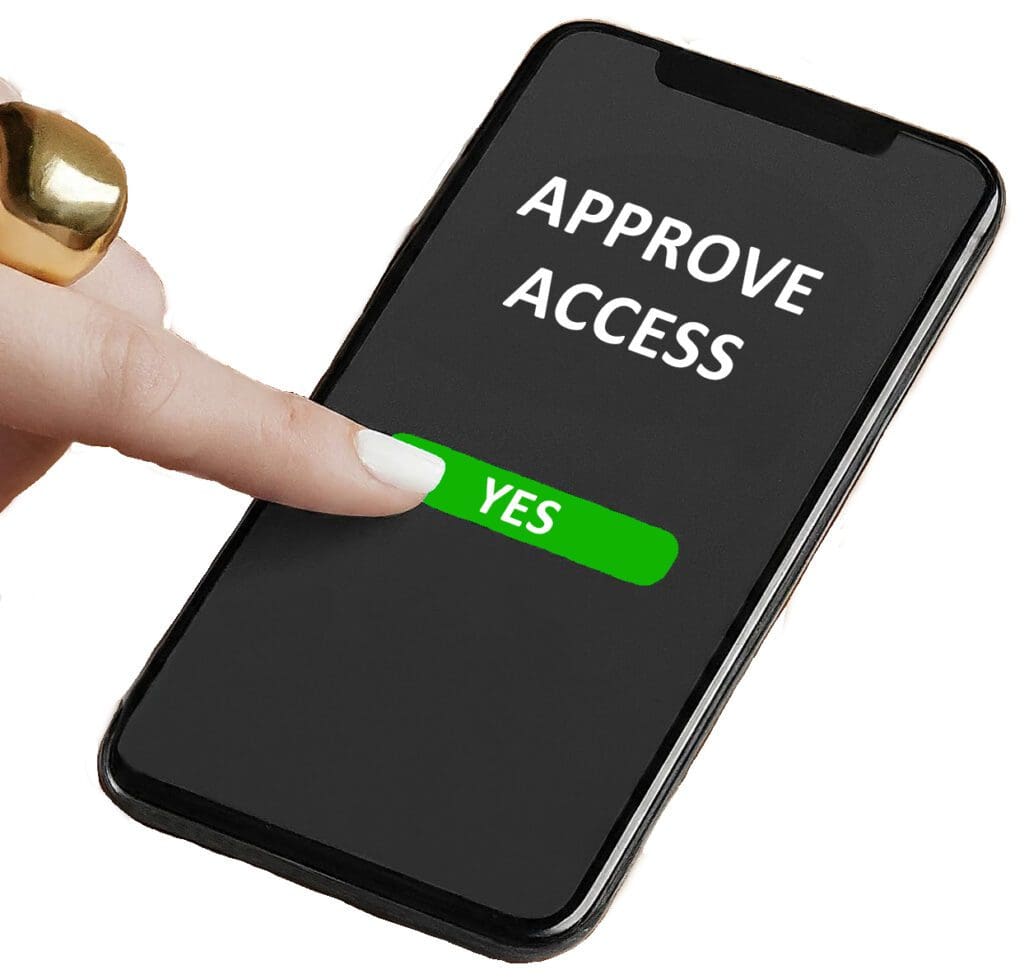Protecting your business from advanced cyber threats is more important than ever. Multi-Factor Authentication (MFA) has become a critical defense mechanism, adding an extra layer of security to user accounts. MFA requires users to verify their identity through at least two different factors, such as something they know (like a password), something they have (like a mobile device), or something they are (like a fingerprint). Despite its effectiveness, MFA can still be exploited if not correctly implemented and managed. As cybercriminals adapt, MFA Fatigue Attacks have surfaced as a significant risk. Cybercriminals are continuously evolving, and a relatively new threat, known as MFA Fatigue Attacks, has emerged. Understanding how these attacks work and strategies to prevent them is crucial for safeguarding your business.

What is an MFA Fatigue Attack?

An MFA fatigue attack, also known as prompt bombing, push bombing, or notification fatigue, is a social engineering tactic that aims to overwhelm users with repeated MFA notifications, hoping the user will eventually approve one out of frustration or confusion. This can grant the attacker unauthorized access to the user’s account and, consequently, the organization’s sensitive data. This type of attack exploits the human element, making it a particularly dangerous tactic.
For instance, imagine receiving constant push notifications to authenticate a login attempt, even though you know you didn’t initiate one. Over time, the constant barrage might wear you down, leading to a momentary lapse in judgment where you mistakenly approve the request. This simple action can provide the hacker with access to your sensitive data.
How Does a MFA Fatigue Attack Work?
A MFA fatigue attack generally follows these stages:
- Credential Acquisition: Attackers obtain the target’s login credentials through various methods, such as phishing, brute-force attacks, or purchasing stolen credentials on the dark web.
- MFA Prompt Spamming: Once they have the credentials, attackers repeatedly attempt to log in to the target’s account, triggering MFA prompts. These prompts can be sent via text messages, email, or push notifications to the user’s device.
- User Fatigue and Manipulation: If the victim doesn’t immediately approve the login, the attacker aims to overwhelm the user with a barrage of prompts, creating a sense of annoyance and frustration. This can lead to the user eventually approving a login request, granting the attacker unauthorized access.
- Unauthorized Access: Once the victim accepts a prompt—perhaps out of frustration—the attacker gains full access to the protected account and any connected systems.
A notable example of this attack occurred at Uber in 2022, where a hacker repeatedly sent MFA prompts to an employee and then contacted them via WhatsApp, pretending to be internal IT support. The employee, believing the prompts were legitimate, eventually approved the request, allowing the attacker to access Uber’s network.
Why MFA Fatigue Attacks Are Growing
As businesses increasingly rely on MFA to secure their networks, attackers have begun targeting the weakest link—human behavior. Unlike traditional phishing or brute-force attacks, MFA fatigue exploits the user’s tendency to act on autopilot when overwhelmed or distracted.
Moreover, the widespread adoption of cloud services and remote work has created more opportunities for these types of attacks. Employees logging in from various locations, often on personal devices, make it easier for attackers to launch MFA fatigue attacks undetected.
The Impact of an MFA Fatigue Attack
MFA fatigue attacks rely on the attacker having valid credentials to initiate the flood of MFA prompts. Unfortunately, credential theft is increasingly common. According to the 2024 Data Breach Investigations Report by Verizon, credential theft remains one of the top attack vectors. As organizations adopt more identity-centric applications, the risk of credential theft grows, providing attackers with the means to launch MFA fatigue attacks.
The consequences of a successful MFA fatigue attack can be devastating. Once a hacker gains access to an account, they can infiltrate your entire network, steal sensitive information, and even deploy ransomware. These breaches can result in significant financial losses, legal liabilities, and long-term damage to your company’s reputation. Preventing credential theft is a critical step in stopping MFA fatigue attacks.
How to Prevent MFA Fatigue Attacks
To safeguard your organization from MFA fatigue attacks, consider implementing the following strategies:
- Limit MFA Push Notifications: Limit the number of push notifications sent within a certain time frame. This helps to minimize the chances of an MFA fatigue attack and ensures users aren’t overwhelmed by constant prompts.
- Modify MFA Authentication Methods: Explore replacing simple “approve” or “deny” prompts with more complex actions, such as entering a code or using biometric verification. Disabling push notifications and using time-based one-time passwords (TOTP) or hardware tokens can also enhance security as they are less susceptible to fatigue attacks.
- Implement Adaptive MFA: Instead of relying solely on traditional MFA methods, consider implementing adaptive MFA, which evaluates the context of the login attempt (e.g., location, device, time of day) before prompting the user for authentication. This reduces the likelihood of MFA fatigue by ensuring only legitimate requests are sent.
- Educate Users on MFA Fatigue: Training your staff on recognizing and responding to MFA fatigue attacks is vital. Employees need to understand the risks and be able to recognize and report suspicious MFA activity. KT Connections provides cybersecurity awareness training that can help keep your team informed and vigilant. This can help employees identify suspicious activity and understand the importance of never approving an unexpected MFA request.
- Monitor and Respond to Unusual Activity: Keep a close eye on user activity for any signs of compromise, such as unusual login attempts or unauthorized access to sensitive data. You may want to utilize monitoring tools that can detect unusual login attempts, such as multiple MFA requests or logins from unexpected locations. Managed detection and response (MDR) solutions can provide real-time alerts and help prevent attacks before they succeed. By monitoring these activities in real-time, you can quickly identify and respond to potential MFA fatigue attacks before they succeed.
- Use Biometric Authentication: Consider incorporating biometric factors, such as fingerprints or facial recognition, as part of your MFA strategy. These methods are harder for attackers to exploit and can reduce the risk of MFA fatigue.
MFA fatigue attacks pose a significant and escalating threat that businesses must address head-on. By grasping the mechanics of these attacks, deploying rigorous security protocols, educating staff, and maintaining vigilance, businesses can substantially mitigate the risk of unauthorized access and data breaches. For businesses seeking expert assistance in enhancing their cybersecurity posture, KT Connections offers comprehensive assessments tailored to identify and address specific vulnerabilities. Contact us today!